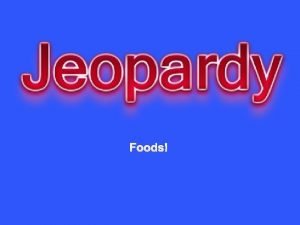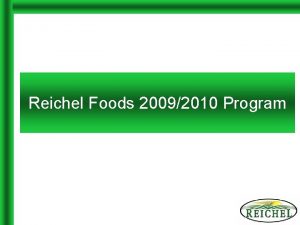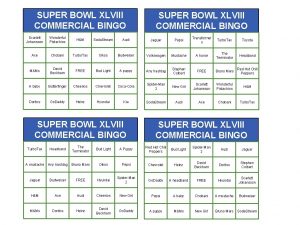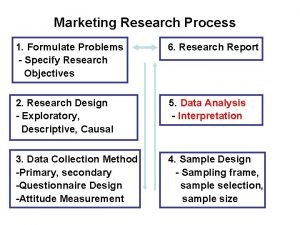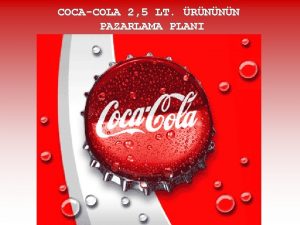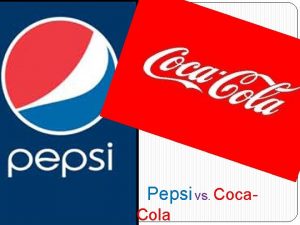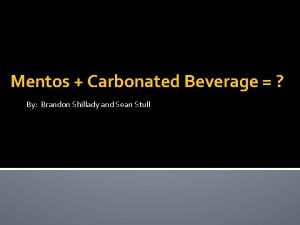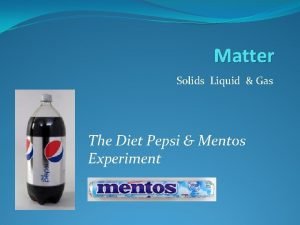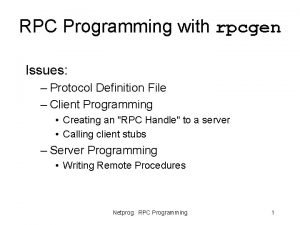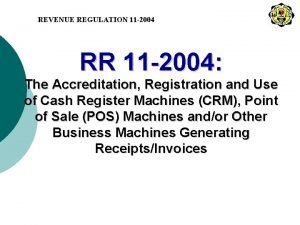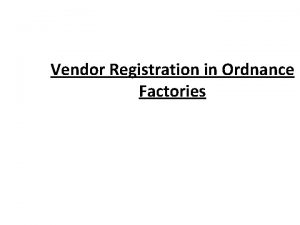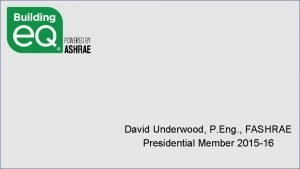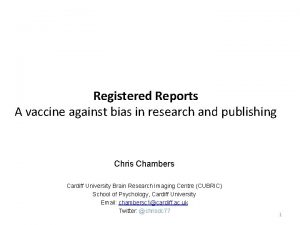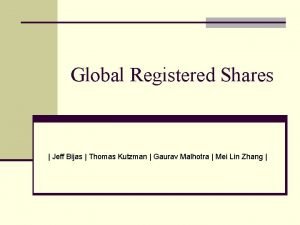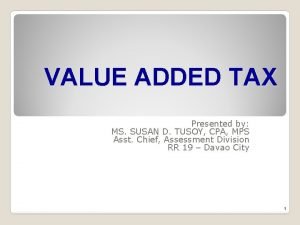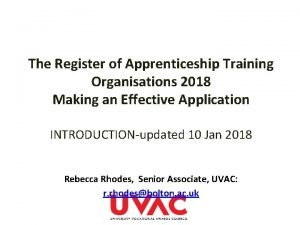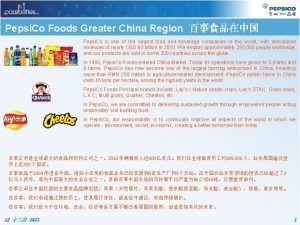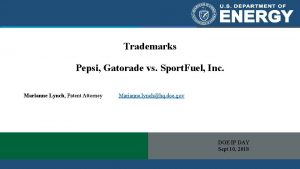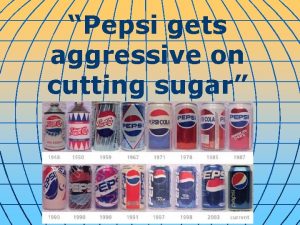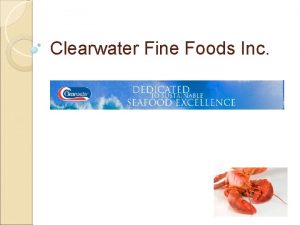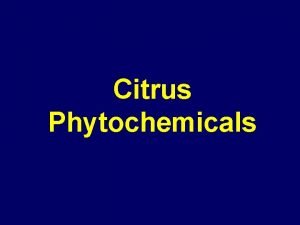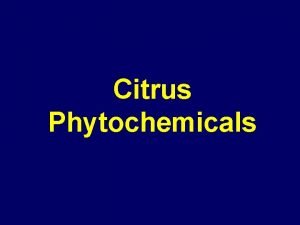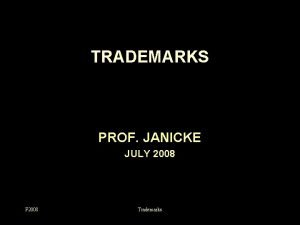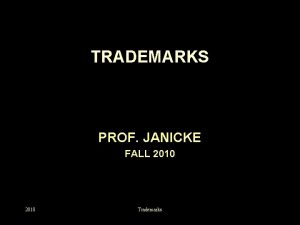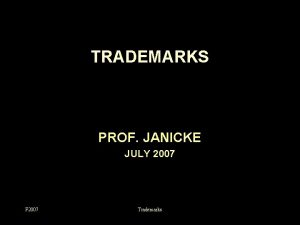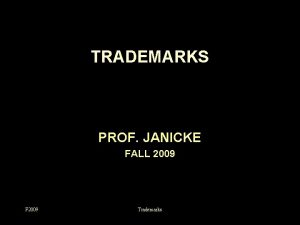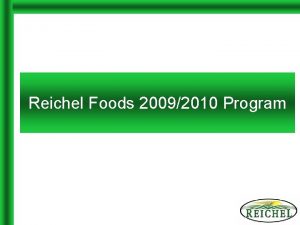Sugary foods Registered trademarks of Pepsi Co Inc





































- Slides: 37


Sugary foods Registered trademarks of Pepsi. Co, Inc. , 2007 (www. pepsi. com; www. mtdew. com; www. mugrootbeer. com), Coca-Cola Company, 2007 (www. thecoca-colacompany. com), The Beverage Partners Worldwide, 2007 (www. nestea. com) and Snapple Beverage Corporation, 2006 (www. snapple. com), The Hershey Company, 2007 (www. hersheys. com), Mars, Inc. , 2006 (www. snickers. com; www. m-ms. com; www. milkywaybar. com; )

Sweet Chemicals Chemical Name Glucose Sucrose Fructose www. chemfinder. com Structure

Obesity Map--2006 Percentage of obese adults (>30 BMI) Overweight and Obesity. Center for Disease Control and Prevention. 2007. (accessed: 8/5/07) http: //www. cdc. gov/nccdphp/dnpa/obesity/trend/maps/index. htm

Dietary options § Control consumption of sugars § Simple carbohydrates § Usage of low calorie or zero calorie sweeteners § Splenda § Equal § Sweet’n Low Registered trademark of Cumberland Packing Corp. 2003 (www. sweetnlow. com); The Merisant Company, 2006 (www. equal. com); Mc. Neil Nutritionals, LLC, 2007 (www. splenda. com)

Artificial Sweeteners Sweetener Structure Aspartame Saccharin Sucralose www. chemfinder. com

Synthesis of Sucralose

Artificial sweeteners § Consumers are hesitant due to health issues § Cancer concerns (saccharin/aspartame) § Side effects § Headaches § Diarrhea

Dietary market § In need of a natural low calorie or zero calorie sweetener § Sweet Proteins?

Neoculin: A Sweet-Tasting, Taste -Modifying Protein and its Interaction with T 1 R 2 & T 1 R 3 of the Sweet Taste Receptor Family Jeffrey T. Kushner University of Pennsylvania MCE Program Cohort 6 Thesis Presentation

Research Focus 1. Features of Neoculin and interaction with T 1 R 3 receptor 2. Regions of Neoculin that elicit sweet taste response with T 1 R 2+T 1 R 3 complex 3. Cause of Taste Modifying Function

Taste Overview • Taste Map No Longer • Refined knowledge since 2001 • Five Major Tastes Marieb, Elaine, N. “Chemical senses: taste and smell. ” Human Anatomy and Physiology, 2 nd Ed. Benjamin Publishing Company. New York, 1992; pp 496.

Taste Overview Sour Salt § Different mechanisms for simple tastes vs. complex tastes Adapted from: Lindeman, Bernd. Taste Reception. Physiological Reviews. 1996, 76, pp 751.

Taste Overview § Series of events to elicit an action potential University of Arizona, 2007 (www. neurobio. arizona. edu)

Testing Taste Human Embryonic Kidney Cells Taste Testing Panel Nakajima, et al. Appl. Environ. Microbiol. 2006, 72, pp 3720. Electric Tongue Lotus Bakeries NV, 2007 (www. lotusbakeries. com) Legin, et al. Anal. Bioanal. Chem. 2004, 380, pp 42.

Taste Receptor: Overview § Homodimers § T 1 R’s § Heterodimer Small sweeteners Large nonprotein sweeteners § T 1 R 2+T 1 R 3 § Sweet taste receptor complex § Venus flytrap domain § Sweeteners § Proteins 7 -transmembrane helix-receptor proteins Adapted from: Temussi, Pierandrea. J. Mol. Recog. 2006, 19, pp 188 -199.

Neoculin: Overview §From Curculigo latifolia plant (West Malaysia) §Basic Subunit § Acidic Subunit § 114 amino acids § 113 amino acids PDB ID: 2 d 04.

Features of Neoculin § Side-by-side comparison Yellow line--hydrophobicity purple line--hydrophilicity Acidic Subunit Basic Subunit Bowen, R. Protein hydropathicity plots. 1998. http: //arbl. cvmbs. colostate. edu/molkit/hydropathy/ (accessed: 7/22/07)

Features of Neoculin Rotated 180º Adapted from: Esposito, et al. J. Mol. Biol. 2006, 360, pp 452. § Electrostatic Potential § Potential energy associated with electric fields § NAS--yellow; NBS--orange § Blue--basic; red--acidic

Protonations Histidine Aspartate

Features of the T 1 R 3 Inactive Active § Cysteine-rich region § Negatively charged cavity Adapted from: Temussi, Pierandrea. J. Mol. Recog. 2006, 19, pp 192

Specifics of Neoculin § Acidic Loops § Stability § Taste Modifying Basic Loops Bind with T 1 R 3 to elicit sweet response Moreland, J. L. ; Gramada, A. ; Buzko, O. V. ; Zhang, Qing; Bourne, P. E. Molecular biology toolkit (MBT): a modular platform for developing molecular visualization applications. BMC Bioinformatics, 6: 21 (2005)

Loop Differences Neoculin Acidic Subunit--Chain A 1 DSVLLSGQTL YAGHSLTSGS YTLTIQNNCN LVKYQHGRQI WASDTDGQGS 51 QCRLTLRSDG NLIIYDDNNM VVWGSDCWGN NGTYALVLQQ DGLFVIYGPV 101 LWPLGLNGCR SLN Neoculin Basic Subunit--Chain B 1 DNVLLSGQTL HADHSLQAGA YTLTIQNKCN LVKYQNGRQI WASNTDRRGS 51 GCRLTLLSDG NLVIYDHNNN DVWGSACWGD NGKYALVLQK DGRFVIYGPV 101 LWSLGPNGCR RVNG Adapted from: PDB ID: 2 d 04. § 56 amino acids found in four loops § Only 10 residue differences

Amino Acid Difference

Important Amino Acids Amino Acid Structure Hydropathicity Basicity Tyrosine Hydrophobic Neutral Glycine Neutral Glutamine Hydrophilic Neutral Histidine Hydrophilic Slightly Basic Aspartic Acid Strongly hydrophilic Acidic Arginine Hydrophilic Basic www. chemfinder. com

Important differences Acidic Subunit Basic Subunit Outcome 1 st Fold Hydrophobic (Tyr, Gly) Hydrophilic (His, Asp) Hydropathicity change 3 rd Fold Neutral p. H (Gly, Gln) Basic p. H (Arg, Arg) Change in p. H character

Docking Model § Neoculin bonded to T 1 R 3 utilizing ‘wedge site binding’ § Types of interactions § Number of surface interactions determines sweetness Shimizu-Ibuka, et, al. Crystal structure of Neoculin: insights into its sweetness and taste-modifying activity. J Mol. Biol. 2006, 359, pp 155

Taste-Modifying § Possibly due to drastic change in electrostatic potential of heterodimer OR § Protonation of only acidic unit PDB ID: 2 d 04.

Conclusions § Binding between NBS & T 1 R 3 at loop region § NAS aids conformational change § Protonated form of Neoculin changes conformation for Taste-Modifying activity

Future Research in Taste § Crystallize tastant bonded with taste receptor § Identify specific amino acid regions on Taste Receptor involved in binding § bonding patterns and behaviors between taste receptor and tastants § Pursue mass extracellular production of Neoculin


References (� 1) Marieb, Elaine, N. “Chemical senses: taste and smell. ” Human Anatomy and Physiology, 2 nd Ed. Benjamin Publishing Company. New York, 1992; pp 496 -499. (2) Shallengerger, Robert, S. Taste recognition chemistry. Pure Appl. Chem. 1997, 69, pp 659 -666. (3) Brownlee, Christen. Sweet finding. Sci News. 2006, 170, p 9. (4) Turnbull, Bianca; Matisoo-Smith, Elizabeth. Taste sensitivity to 6 -npropylthiouracil predicts acceptance of bitter-tasting spinach in 3 -6 y-old children. Am. J. Clin. Nutr. 2002, 76, pp 1101 -1105. (5) Margolskee, Robert, F. Molecular mechanisms of bitter and sweet taste Transduction. J. of Biol. Chem. 2002, 277, pp 1 -4. (6) Reinberger, Stefanie. Bitter could be better. Sci. Am. Mind. 2006, 17, p 3. (7) Matsunami, Hiroaki; Amrein, Hubert. Taste perception: how to make a gourmet mouse. Cur. Biol. 2004, 14, pp R 118 -R 120. (8) Temussi, Pierandrea. The history of sweet taste: not exactly a piece of cake. J. Mol. Recog. 2006, 19, pp 188 -199. (9) Nakajima, Ken-ichiro. ; Askura, Tomiko. ; Maruyama, Jun-ichi. ; Morita, Yuji. ; Oike, Hideaki. ; Shimizu-Ibuka, Akiko. ; Misaka, Takumi. ; Sormachi, Hiroyuki. ; Arai, Soichi. ; Kitamoto, Katsuhiko. ; Abe, Keiko. Extracellular production of Neoculin, a sweet-tasting heterodimeric protein with taste-modifying activity, by Aspergillus oryzae. Appl. Environ. Microbiol. 2006, 72, pp 3716 -3723.

References (cont. ) (10) Nakajima, Ken-ichiro. ; Askura, Tomiko. ; Oike, Hideaki. ; Morita, Yuji. ; Shimizu-Ibuka, Akiko. ; Misaka, Takumi. ; Sormachi, Hiroyuki. ; Arai, Soichi. ; Abe, Keiko. Neoculin, a tastemodifying protein, is recognized by human sweet taste receptor. Chem. Senses. 2006, 17, pp 1241 -1244. (11) Shimizu-Ibuka, Akiko. ; Morita, Yuji. ; Terada, Tohru. ; Asakura, Tomiko. ; Nakajima, Ken-ichiro. ; Iwata, So. ; Misaka, Takumi. ; Sorimachi, Hiroyuki. ; Arai, Soichi. ; Abe, Keiko. Crystal structure of Neoculin: insights into its sweetness and taste-modifying activity. J Mol. Biol. 2006, 359, pp 148158. (12) Garrett, R. H. ; and Grisham, C. M. Amino acids and proteins. Principles of Biochemistry with a Human Focus, updated Third Edition. Brooks/Cole. Belmont, CA, 2007. pp 590 -627. (13) Mc. Murry, John. ; Casellion, Mary, E. Amino acids and proteins. Fundamentals of General, Organic, and Biological Chemistry; Fourth Edition. Pearson Education, Inc. New Jersey. 2003, pp 500 -559. (14) Pavia, Donald, L. ; Lampman, Gary, M. ; Kriz, George, S. Mass spectrometry and NMR. Introduction to Spectroscopy, Third Edition. Thompson Learning, Inc. 2001, pp 10; 102; 256; 390. (15) Sugita, M. Taste perception and coding in the periphery. Cell. Mol. Life Sci. 2006, 63, pp 2000 -20155. (16) Berg, Jeremy, M. ; Tymoczko, John, L. ; Lubert, Stryer. Responding to environmental changes: taste is a combination of senses that function by different mechanisms. Biochemistry, 5 th Edition. W. H. Freeman and Co. 2002. (Accessed: 6/5/07) http: //www. ncbi. nlm. nih. gov/books/bv. fcgi? highlight=32. 2&rid=stryer. section. 4589#top (17) Esposito, Veronica. ; Gallucci, Roberta. ; Picone, Delia. ; Saviano, Gabriella. ; Tancredi, Teodorico. ; Temussi, Piero, A. The importance of electrostatic potential in the interaction of sweet proteins with the sweet taste receptor. J. Mol. Biol. 2006, 360, pp 448 -456.

References (cont. ) (18) Morini, Gabriella. ; Bassoli, Angela. ; and Temussi, Piero, A. From small sweteners to sweet proteins: anatomy of the binding sites of the human T 1 R 2_T 1 R 3 receptor. J Med. Chem. 2005, 48, pp 5520 -5529. (19) Nie, Yiling. ; Vigues, Stephan. ; Hobbs, Jeanette, R. ; Conn, Graeme, L. ; Munger, Steven, D. Distinct contributions of T 1 R 2 and T 1 R 3 taste receptor subunits to the detection of sweet stimuli. Curr. Biol. 2005, 15, pp 1948 -1952. (20) Walters, D. Eric. ; Hellekant, Goran. Interactions of the sweet protein Brazzein with the sweet taste receptor. J. Agric. Food Chem. 2006, 54, pp 10129 -10133. (21) Jiang, Peihua. ; Ji, Qingzhou. ; Liu, Zhan. ; Snyder, Lenore, A. ; Benard, Lumie, M. J. ; Margolskee, Robert, F. ; Max, Marianna. The cysteine-rich region of T 1 R 3 determines responses to intensely sweet proteins. J. Biol. Chem. 2004, 279, pp 45068 -45075. (22) PDB ID: 2 d 04. Shimizu-Ibuka, A. ; Morita, Y. ; Terada, T. ; Asakura, T. ; Nakajima, K. ; Iwata, S. ; Misaka, T. ; Sorimachi, H. ; Arai, S. ; Abe, K. Crystal structure of Neoculin, a sweet protein with taste-modifying activity. J. Mol. Biol. 2006, 359, pp 148 -158. (23) Moreland, J. L. ; Gramada, A. ; Buzko, O. V. ; Zhang, Qing; Bourne, P. E. Molecular biology toolkit (MBT): a modular platform for developing molecular visualization applications. BMC Bioinformatics, 6: 21 (2005) (24) Bowen, R. Protein hydropathicity plots. 1998. http: //arbl. cvmbs. colostate. edu/molkit/hydropathy/ (accessed: 7/22/07) (25) Cook, David, J. ; Hollowood, Tracey, A. ; Linsorth, Roberts, S. T. ; Taylor, Andrew, J. Correlating instrumental measurements of texture and flavour release with human perception. Int. J. Food Sci. Tech. 2005, 40, pp 631 -641.

References (cont. ) (26) Froloff, Nicolas. ; Faurion, Annick. ; Mac. Leod, Patrick. Multiple human taste receptor sites: a molecular modeling approach. Chem. Senses. 1997, 21, pp 425 -445. (27) Beauchamp, Gary, K. ; Reed, Danielle, R. ; Tordoff, Michael, G. ; Bachmanov, Alexander, A. Genetics of taste. Amer. Chem. Soc. 2002, Chapter. 4, pp 40 -51. (28) Cambell, Neil, A. Recombinant DNA. Biology, Third Edition. The Benjamin/Cummings Publishing Company, Inc. 1993, pp 390399. (29) Roy, Glenn. ; Mc. Devitt, John, T. In vitro taste sensors: technology and applications. Amer. Chem. Soc. 2002, Chapter. 20, pp 262275. (30)Riul, Antonio, Jr. ; Malmegrim, Roger, R. ; Fonseca, Fernando, J. ; Mattoso, Luiz, H. C. Nano-assembled films for taste sensor application. Artif. Organs. 2003, 27, pp 469 -472. (31) Jensen, Ric. Electronic tongue measure food flavors and water chemistry. Envir. Health, 1999, pp 38. (32) Legin, Andrey. ; Rudnitskaya, Alisa. ; Clapham, David. ; Seleznev, Boris. ; Lord, Kevin. ; Vlasov, Yuri. Electronic tongue for pharmaceutical analytics: quantification of tastes and masking effects. Anal. Bioanal. Chem. 2004, 380, pp 36 -45. (33) Murray, Owen, J. ; dang, Wenbin; Bergstrom, David. Using an electronic tongue to optimize taste-masking in a lyophilized orally disintegrating tablet formulation. Pharm. Tech. 2004, pp 42 -52. (34) PDB: ID: 2 brz. Caldwell, J. E. ; Abildgaard, F. ; Dzakula, Z. ; Ming, D. ; Hellekant, G. ; Markley, J. l. Solution structure of thermostable sweet-tasting protein Brazzein. Nat. Struct. Biol. 1998, 5, pp 427 -431.

References (cont. ) (35) PDB ID: 1 gxv. Refaee, M. ; Tezuka, T. ; Akasak, K. ; Williamson, M. Pressure-dependent changes in the solution structure of hen egg-white lysozyme. J. Mol. Biol. 2003, 327, pp 857. (36) PDB ID: 1 fa 3. Spadaccini, R. ; Crescenzi, O. ; Tancredi, T. ; De. Casamassimi, N. ; Saviano, G. ; Scognamiglio, R. ; Di. Donato, A. ; Temussi, P. A. Solution structure of a sweet protein: NMR study of MNEI, a single chain Monellin. J. Mol. Biol. 2001, 305, pp 505 -514. (37) PDB ID: 2 blr. Nanao, M. H. ; Sheldrick, G. M. ; Ravelli, R. B. Improving radiation-damage substructure of Rip. Acta. Crystallogr. 2005, 61, pp 1227. (38) Masada, Tetsuya. ; Kitabatake, Naofumi. Developments in biotechnological production of sweet proteins. J Biosci. Bioeng. 2006, 102, pp 375 -389. (39) Masuda, Tetsuya. ; Ide, Nobuyuki. ; Kitabatake, Naofumi. Structure-sweetness relationship in egg white lysozyme: role of lysine and arginine residues on the eliciatation of lysozyme sweetness. Chem. Senses. 2005, 30; pp 667 -681. (40) De Capua, Antonia. ; Goodman, Murray. ; Amino, Yusuke. ; Saviano, Michele. ; and Benedetti, Ettore. Conformational analysis of aspartame-based sweeteners by NMR spectroscopy, molecular dynamics simulations, and x-ray diffraction studies. Chem. Bio. Chem. 2006, 7, pp 377 -387. (41) Vepuri, Suresh, B. ; Tawari, Nilesh, R. ; Degani, Mariam, S. Quantitative structure-activity relationship study of some aspartic acid analogues to correlate and predict their sweetness potency. QSAR Comb. Sci. 2007, 26, pp 204 -214.

References (cont. ) (42) Birch, Gordon, G. Role of water in sweet taste chemoreception. Pure Appl. Chem. 2002, 74, pp 11031108. (43) Chemical Reference Database: Chem. Finder. Cambridge. Soft Corporation, 2004. www. chemfinder. com (accessed: 7/28/07) (44) Tully, William; Vernon, Nicholas, M. ; Walsh, Peter, A. Process for the preparation of 1, 6 -dichloro-1, 6 dideoxy-. beta. -D-fructofuranosyl-4 -chloro-4 -deoxy-. alpha. United States Patent: #4, 801, 700. January 31, 1989 (45) Acid-Base Properties of Proteins. Chemistry; A Project of the American Chemical Society. Freeman. New York, 2005, pp 619 -621.
 Menstruation occurs
Menstruation occurs What adds sugary fluid to sperm
What adds sugary fluid to sperm Danone foods inc
Danone foods inc Kraft foods international
Kraft foods international Reichel foods inc
Reichel foods inc Clearwater fine foods inc
Clearwater fine foods inc Reichel foods
Reichel foods 4-2 reading quoting paraphrasing and summarizing
4-2 reading quoting paraphrasing and summarizing Scarlett johansson mustache
Scarlett johansson mustache Quechuc
Quechuc Pepsi perceptual map
Pepsi perceptual map Coca cola pazarlama planı
Coca cola pazarlama planı Organigrama de pepsi
Organigrama de pepsi Tiểu luận chuỗi cung ứng của coca-cola
Tiểu luận chuỗi cung ứng của coca-cola Ma trận qspm của pepsi
Ma trận qspm của pepsi Brad's drink pepsi
Brad's drink pepsi Mentos and diet pepsi
Mentos and diet pepsi Pepsi mission statement
Pepsi mission statement Brand hierarchy
Brand hierarchy Pepsi and mentos
Pepsi and mentos Registered disability savings plan bmo
Registered disability savings plan bmo Appointment of registered valuer under companies act, 2013
Appointment of registered valuer under companies act, 2013 Ulookup
Ulookup Nhtsa registered importers 2020
Nhtsa registered importers 2020 Registered nurse requirements california
Registered nurse requirements california Bir registered pos
Bir registered pos Commons registered organizations
Commons registered organizations Ordnance factory vendor registration
Ordnance factory vendor registration Registered provider
Registered provider Registered report
Registered report Liabilities of registered trade union
Liabilities of registered trade union Grs certificate
Grs certificate Dotars raws
Dotars raws Registered valuer securities or financial assets
Registered valuer securities or financial assets Subsidiary sales journal for vat registered taxpayer
Subsidiary sales journal for vat registered taxpayer Registered training organisation list
Registered training organisation list Brian lopez maryland
Brian lopez maryland Lone star college nursing
Lone star college nursing




